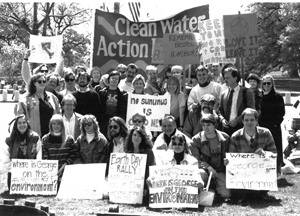United States Energy & Environmental Policy History
“Prior to the 1970s, energy policy was not a major or sustained concern of government. For the most part it consisted of federal and state regulation of goal, natural gas, and oil, particularly of the prices charged and competition in the private sector. The goal was to stabilize markets and ensure both profits and continuing energy supplies”
However, partially in response to industrialization of the late 19th century, American citizens of the 1960s participated in environmental movements. At this time, postindustrial social values pervaded concurrently with increasing economic development and consumerism that followed World War II. 
In 1963, the Clean Air Act was designed to control air pollution, encouraging breathable air. In 1972, the Clean Water Act was put into effect to govern water pollution. Likewise, the Safe Drinking Water Act of 1974 ensured water quality standards at the federal level. And in 1976, the Resource Conservation and Recovery Act was enacted to manage the disposal of solid and hazardous waste.
Hence, with mixed intentions, goals, and expectations, environmental and energy policies continue to be contested, which impacts future plans, programs, and decisions in America.
“Public policy is not made in a vacuum. It is affected by social and economic conditions, prevailing political values and the public mood at any given time, the structure of government, and national and local cultural norms, amo
ng other variables. Taken together, this environment determines which problems rise to prominence, which policy alternatives receive serious consideration, and which actions are viewed as economically and politically feasible…Presented with conflicting assumption and interpretations, [citizens] need to be aware of the sources of information and judge for themselves which argument is the strongest”